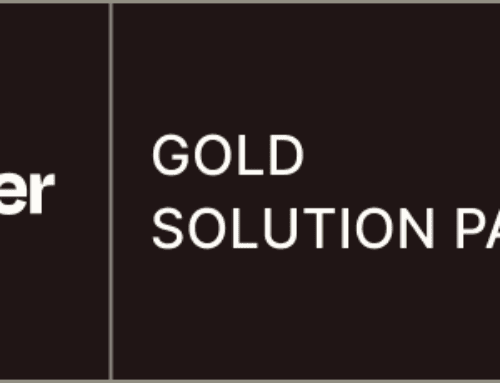How to Manage Pending Drafts with Email Notifications Using Make
Introduction to Managing Drafts
Managing pending drafts can feel like herding cats, particularly when you have numerous tasks on your plate. If you often find yourself overwhelmed by the stack of drafts that need attention, this guide is for you. Here, we will explore a solution that simplifies the process using Make — an automation platform designed to streamline your workflow.
By setting up email notifications for pending drafts, you gain a digital assistant nudging you to complete them. This proactive approach not only keeps your tasks organized but also enhances productivity by eliminating the guesswork about what needs to be tackled next.
Understanding the Importance of Email Notifications
Email notifications act like gentle reminders, ensuring nothing slips through the cracks. In the chaotic dance of daily responsibilities, it’s easy to lose track of unfinished tasks. However, a well-timed email can serve as that needed nudge, helping you stay on top of your game.
Beyond their role as reminders, email notifications offer a sense of structure. By knowing exactly which drafts are pending, you can prioritize more effectively, allocate your time wisely, and ultimately reduce stress. It’s like having a personal alert system that’s always got your back.
What is Make?
Before diving into email notifications, let’s introduce you to Make. Think of it as your new best friend for automation. It’s a platform that connects different apps and services, allowing them to communicate with each other without you lifting a finger. With Make, routine tasks become automatic, freeing you to focus on more important things.
Using Make is like having a superpower in your digital tool belt. It offers a world of possibilities for automating processes that otherwise eat into your day. Whether you’re managing projects, sending emails, or alerting about pending drafts, Make has solutions ready at your fingertips.
Setting Up Notifications in Make
The first step to reclaim your time is setting up the notification system. Start by accessing Make’s platform and creating a scenario. This scenario acts as a blueprint where you define what triggers an action—in this case, identifying pending drafts—and what the action will be, such as sending an email.
Once the scenario is set up, you can customize it to suit your specific needs. Want emails to be sent at a particular time? Or perhaps only want to notify about specific kinds of drafts? The flexibility Make offers allows you to tailor these notifications to fit your unique workflow.
Customizing Your Email Notifications
Customization is key when it comes to making sure your email notifications are genuinely helpful. You’ll want to determine both the frequency and the content of these alerts. Are daily notifications ideal, or would weekly ones suffice? You know your work habits best.
Next, think about the content of your emails. Including draft titles, deadlines, and even a direct link to access them can make your notifications much more actionable. Remember, the goal here is to create emails that are a clear call to action, guiding you directly to what needs doing.
Troubleshooting Common Issues
Even well-designed systems encounter hiccups now and then. Maybe notifications stop or don’t trigger correctly. When that happens, step back and review your setup. Are the triggers working? Is there an issue with the connection between apps? Often, the solution lies in these foundational elements.
If the problem persists, Make’s support resources are a treasure trove of information. Their help guides, forums, and support teams can provide insights, akin to a lighthouse guiding ships through stormy seas, helping you navigate any technical challenges you face.
Benefits of Automating Draft Notifications
Imagine freeing up significant chunks of your time simply by leveraging automation. One primary benefit is efficiency. Automated notifications keep you updated in real-time, minimizing delays in completing tasks. Efficiency here is like cutting a straight path through a dense forest, getting you to your destination quicker.
Additionally, there’s a peace of mind that comes with knowing that your system is self-sustaining. No longer are you the sole manager of your workflow; automation helps carry that load, letting you breathe easier and focus on the creative or strategic aspects of your projects.
Conclusion
Incorporating email notifications for pending drafts through Make isn’t just about improving productivity—it’s about transforming how you manage your workload. With this system in place, you’ll not only stay informed but also save precious mental energy for what truly matters. It’s time to embrace these tools and see just how much smoother your day can run.
Frequently Asked Questions
1. How do I get started with Make for automation?
To start using Make, sign up for an account on their website. After signing up, you can explore various templates and tutorials to familiarize yourself with its capabilities and set up your first automation script.
2. Can I customize the look of the notifications?
Yes, you can customize the notification emails to suit your preferences. Through the Make platform, you can alter the email format, content details, and even the design layout to ensure they are useful and visually appealing.
3. What if my email notifications aren’t sending?
If your emails aren’t sending, double-check the connections between Make and your email service. Additionally, review your scenario settings to ensure everything is configured correctly. Consulting Make’s support team can also resolve persistent issues.
4. Is Make suitable for small teams or companies?
Make is versatile enough to cater to both individuals and small teams. Its scalable features make it a practical choice for organizations of all sizes looking to enhance workflow efficiency through automation.
5. Does Make offer integrations with popular email services?
Absolutely! Make integrates with a broad range of email services, allowing you to send notifications through platforms like Gmail, Outlook, and many others, making it easy to fit into your existing toolkit.









